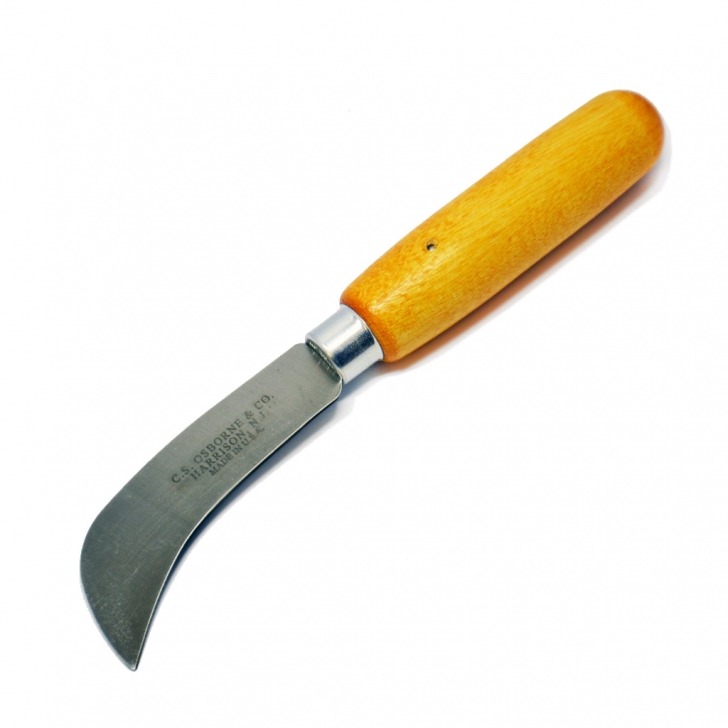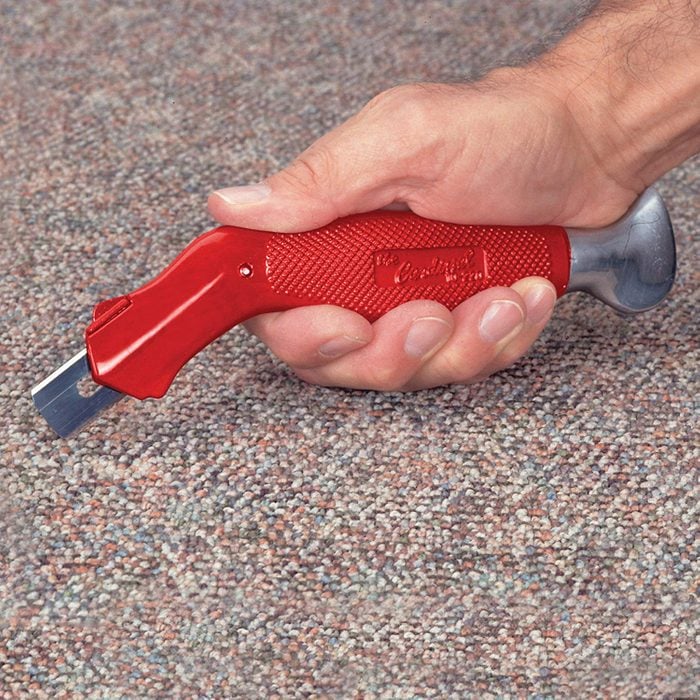Last updated on January 16th, 2024 at 04:17 am
Carpet installation and care require the correct instruments. Carpet installers and DIYers should have a carpet knife. Carpet knives—what are they? This guide covers carpet knives’ usage, characteristics, and benefits. This page covers carpet knives for professional installers and DIYers.
What is a Carpet Knife?
Carpet knives, sometimes known as carpet cutters, are cutting tools designed for carpets.
It is a flexible and important tool for cutting and trimming carpets during installation, mending damaged carpets, and making precise cuts for custom fitting. Carpet knives usually have retractable blades that may be replaced when dull.
Carpet knives have different forms and sizes, but they always cut carpets sharply and precisely. Carpet knives are essential for carpet projects due to their ergonomic form and sharp blades.
Types of Carpet Knives

Carpet knives are offered for different uses and preferences. Common types include:
Carpet Knife
Fixed-blade carpet knives have blades that are permanently connected to the handles. For heavy-duty cutting, this carpet knife is stable and durable. Fixed blades stay sharp and don’t bend.
Carpet Knife
The retractable carpet knife’s blade extends and retracts into the handle. This knife may be safely stored, reducing the risk of cuts or injuries. The retractable design lets users modify blade length for varied cutting depths.
Carpet Hook Knife
Hooked carpet knives have bent blades. This knife is made for cutting carpet without hurting the floor. The hooked blade makes precise cuts, especially around corners and edges.
Carpet Knife

Electric carpet knives speed up cutting for larger jobs and experienced installers. The motorized blade of these knives cuts faster and reduces hand fatigue on carpets. Thick carpets benefit from electric carpet knife.
Features to Consider

To choose the correct carpet knife for your needs, examine various factors. Key features include:
Blade Material
Carpet knife durability and sharpness depend on blade material. Most carpet knives have sharp, durable high-carbon steel blades. Titanium or ceramic coatings improve blade durability and corrosion resistance.
Handle Style
Carpet knife handles alter comfort, grip, and control during cutting. Ergonomic handles with non-slip grips reduce hand fatigue and improve knife control. Some carpet knives have handles with built-in blade storage for convenience.
Adjustable Blade
Blade adjustment is crucial for retractable carpet knives. Find knives with a secure locking mechanism that keeps the blade in place. This prevents accidental blade movement or retraction.
Replace Blade
Carpet knife blades dull and need to be replaced. Consider knives with tool-free or snap-off blades. This simplifies blade swaps, saving time.
How to Use a Carpet Knife

Using a carpet knife properly ensures safe, clean cuts. A carpet knife tutorial:
Prepare the workspace: To cut safely, remove any obstructions. If needed, secure the carpet flat on a clean surface.
Measure and mark: Mark the cutting length or contour with a measuring tape. Mark the carpet measurements with a pencil or marker for accuracy.
Adjust the blade: Adjust the blade length if using a retractable carpet knife. Lock the blade.
Hold the knife properly: Hold the carpet knife securely but comfortably. To avoid cuts, don’t touch the blade.
Start cutting: Align the blade with the measurement. Cut carpet with consistent pressure and a smooth stroke. Force may cause the blade to slip or damage the carpet.
Repeat if necessary: Make many carpet knife passes for longer cuts or intricate forms. Accurate results require following marked lines or measurements.
Trim excess material: After cutting, use the carpet knife to trim surplus carpet. Avoid cutting around the edges or adjacent areas.
Dispose of used blades: Use a blade disposal container or wrap used blades with multiple layers of tape before throwing them away.
Safety Precautions
Safety is crucial when using a carpet knife to avoid mishaps. Safety precautions:
Wear gloves when using a carpet knife to avoid cuts and abrasions.
To protect the floor, use a cutting board or plywood.
Avoid cuts by retracting the blade when not in use. Retractable carpet knives must be locked.
Avoid cutting yourself or others. Keep the blade away from your body to avoid damage.
Keep the carpet knife away from minors and inexperienced users.
Carefully change blades. Avoid touching sharp edges.
Follow local blade disposal restrictions.
Choosing the Right Carpet Knife

Choosing the correct carpet knife might be stressful with so many options. Carpet knife selection factors:
Intended Use: Determine the carpet knife’s main use. Tasks may demand specific blades or features. If you work with sensitive carpets, a hooked blade knife may be better.
Comfort & Ergonomics: Choose a carpet knife with a comfortable handle. This reduces hand fatigue and allows long-term use.
Blade Quality: Consider blade material and sharpness. Durable blades endure longer and cut cleaner. Maintain sharpness with knives with replaceable blades.
Safety Features: Check for blade lock systems and retractable blades. These characteristics reduce user cuts and injuries.
Reviews and Recommendations: Read consumer reviews and ask specialists for advice. Their advice might help you choose the right carpet knife.
Common Questions
How do people use carpet knives?
Carpet knives are used for installing, repairing, and custom fitting carpets. It can also open boxes and cut items.
Carpet knife blade replacement: how often?
Use intensity and material type determine blade replacement frequency. When the blade becomes dull or worn, replace it. Maintain cutting performance by checking and replacing the blade regularly.
A ordinary utility knife instead of a carpet knife?
A utility knife can cut carpets, but it wasn’t meant for that. Carpet knives have retractable blades and ergonomic handles to improve carpet cutting control and precision. A carpet knife will produce better results and reduce carpet and surface damage.
Carpet knives—safe?
Use carpet knives safely. Handle the knife carefully, retract the blade, and wear gloves. Follow the manufacturer’s safety recommendations.
Carpet knife blade sharpening?
Most carpet knives cannot be sharpened. When dull, they are disposable. Sharpening may harm or weaken the blade. Sharp, new blades cut finest.
What stores sell carpet knives?
A6: Hardware, home improvement, and online companies sell carpet knives. Local retailers and trusted online platforms offer several possibilities.
Conclusion
Carpet installation and care require a carpet knife. Its sharp, precise cutting ensures clean, exact cuts for a professional carpet finish.
By studying carpet knives, their characteristics, and safety measures, you can confidently choose and utilize the proper one for your purposes. Always follow carpet knife safety guidelines.
